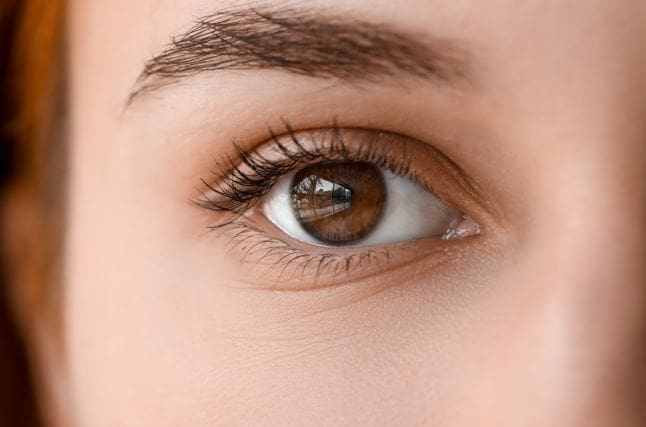Hazel eyes are often regarded as one of the most captivating and enigmatic eye colors. They feature a blend of brown, green, and gold hues that can change appearance based on lighting and surroundings. This article delves into the prevalence of hazel eyes, their unique characteristics, and the genetic and environmental factors contributing to their rarity and beauty.
Understanding Hazel Eyes
Hazel eyes are characterized by their complex coloration, typically including shades of brown, green, and gold. The central part of the iris often has a burst of one color, while the outer part is another, giving hazel eyes a distinctive appearance that can vary in different lighting conditions. This unique color is a result of the interplay between multiple pigments and the way light scatters in the iris.
How Common Are Hazel Eyes?
Hazel eyes are relatively rare, comprising about 5% of the world’s population. They are less common than brown eyes, which dominate globally, but more prevalent than truly rare colors like green and gray. In the United States, around 18% of the population has hazel eyes.
Global Distribution of Hazel Eyes
Hazel eyes are most commonly found in people of European descent, particularly those from North Africa, the Middle East, Brazil, and Spain. They are less frequent among individuals of Asian and African descent. This geographical distribution is influenced by historical migration patterns and genetic mixing.
Genetic Factors Influencing Hazel Eyes
The color of your eyes is primarily determined by the amount and distribution of melanin in the iris, controlled by various genes. Hazel eyes result from a unique combination of genetic factors that produce intermediate amounts of melanin.
Melanin and Eye Color
Melanin is the pigment responsible for coloring the eyes, skin, and hair. There are two types of melanin: eumelanin and pheomelanin. Eumelanin typically produces brown eyes, while pheomelanin contributes to lighter colors like green and hazel. The distribution and concentration of these pigments in the iris give hazel eyes their characteristic mix of colors.
Genetic Complexity
The genetics of eye color is complex, involving multiple genes. Two of the most influential genes are OCA2 and HERC2, which regulate the production and distribution of melanin. A person with hazel eyes often inherits a combination of genes that produce varying amounts of both eumelanin and pheomelanin.
Environmental and Health Factors
While genetics play a significant role, environmental factors can also influence eye color. Sunlight exposure can affect melanin production, and certain medical conditions can cause changes in eye color.
Light and Appearance
Hazel eyes often appear to change color in different lighting conditions. This phenomenon is due to the way light scatters in the iris, highlighting different pigments. For example, hazel eyes might look more green in bright sunlight and more brown in dim light.
Medical Conditions
Certain health conditions, such as Fuchs’ heterochromic iridocyclitis and Horner’s syndrome, can alter the appearance of the eyes, sometimes resulting in hazel-like color changes. These conditions can impact melanin production and distribution, leading to changes in eye color.
Prevalence of Hazel Eyes
| Region | Percentage of Population with Hazel Eyes |
|---|---|
| United States | 18% |
| Europe | 5-15% |
| North Africa | 10% |
| Middle East | 12% |
| Brazil | 15% |
| Asia | 2% |
| Africa | 3% |
Questions and Answers
How does lighting affect hazel eyes?
Lighting can significantly influence the appearance of hazel eyes. Due to the mix of pigments, different lighting conditions can highlight various colors within the iris, making hazel eyes appear more green, brown, or gold at different times.
Are Hazel Eyes More Sensitive to Light?
People with lighter eye colors, including hazel, often have less melanin in their irises. This reduced melanin offers less protection against harmful UV rays, potentially making individuals with hazel eyes more sensitive to bright light and more susceptible to conditions like ocular melanoma.
Can Hazel Eyes Change Color Naturally Over Time?
While it’s rare, eye color can change over time due to aging or certain health conditions. Changes in melanin production or distribution can cause subtle shifts in eye color. However, significant changes are uncommon and often linked to specific medical conditions.
How Are Hazel Eyes Inherited?
Hazel eyes are inherited through a complex interplay of multiple genes. The presence of both eumelanin and pheomelanin, regulated by genes like OCA2 and HERC2, contributes to the hazel eye color. A child can inherit hazel eyes even if neither parent has them, depending on the combination of genes passed down.
Conclusion
Hazel eyes are a unique and captivating eye color, characterized by their blend of brown, green, and gold hues. Although they are relatively rare, they are highly valued for their beauty and versatility. Understanding the genetic and environmental factors that contribute to hazel eyes can help appreciate their complexity and charm.
At Liberty Laser Eye Center, we specialize in enhancing your natural beauty and vision. If you’re interested in learning more about your eye color or considering treatments to enhance your vision, please contact us. Whether it’s understanding the intricacies of astigmatism or exploring the fastest ways to heal a swollen eyelid, we’re here to help with all your eye care needs.

